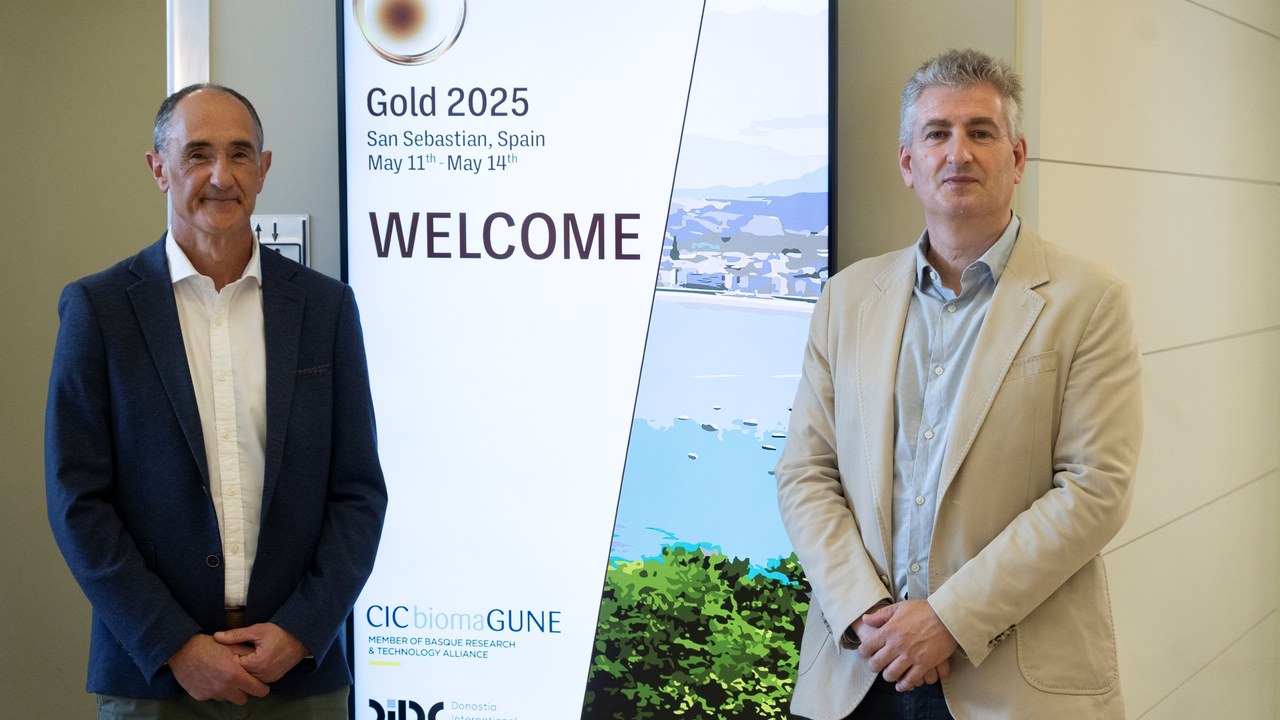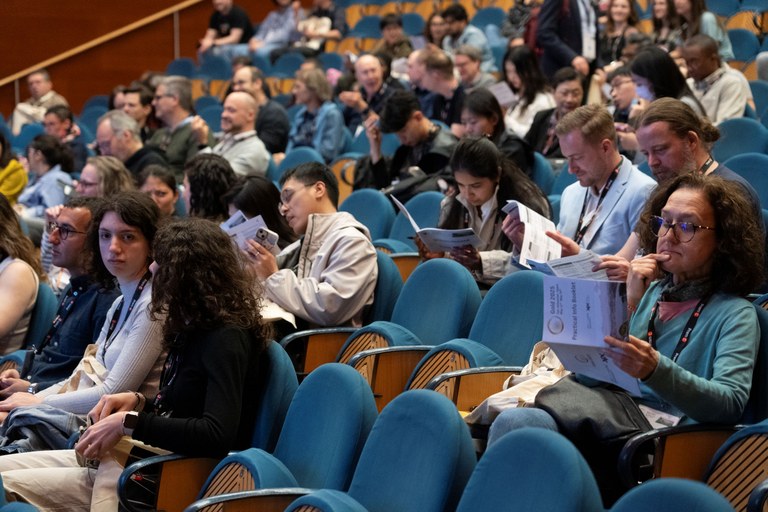Donostia set in gold with the World Conference Gold 2025
The scientific conference organized by CIC biomaGUNE and the DIPC, taking place since yesterday and until 14 May, addressed the most cutting-edge applications of gold in high technology. The Kursaal Convention Center in Donostia/San Sebastian will be hosting leading international figures in the fields of research in biomedicine, nanophotonics, catalysis, and more

The World Conference Gold 2025, organized by the Donostia-based research centers CIC biomaGUNE and the DIPC -Donostia International Physics Center, will be taking place at the Kursaal Convention Centre in Donostia from 11 to 14 May. This conference, chaired by the Ikerbasque Research Professors Luis Liz-Marzán (CIC biomaGUNE) and Javier Aizpurua (DIPC), will be offering a comprehensive overview of the different areas of gold science and technology to over 350 attendees.
Gold has been one of the most important chemical elements receiving the most attention since ancient times, and today it is an essential component of high-tech materials and the subject of intense research in various fields. The Gold 2025 conference has managed to attract internationally renowned experts who will be reporting on their scientific findings and leading discussions on the most salient issues and latest achievements in various fields.
Both Aizpurua and Liz-Marzán highlighted the international nature and high caliber of the conference speakers. “We have managed to attract talent from every continent,” they added, pointing out that events like this are gaining particular relevance “in times like these, when there are cutbacks and the exchange of information between continents is becoming increasingly complicated”.
The conference will be placing special emphasis on chemistry and physics related to various fields of current technological interest: from catalysis, biomedical applications (diagnosis and therapy), the synthesis and characterization of nanoparticles, plasmonics, optics and photonics, electronics, organometallics, to the purification and recycling of precious metals, environmental applications, energy production and conversion, artificial intelligence, etc.
The conference has been supported by various institutions, including Fomento San Sebastián, the Basque Government, the Charter Provincial Council of Gipuzkoa, and the World Gold Council.
Donostia, a hub for research into gold nanoparticles

In fact, it is no coincidence that the Gold 2025 world conference should be held in Donostia. The Gold Conference has a long history and was initially sponsored by the World Gold Council. The international committee that coordinates this series of conferences proposed Donostia as a candidate for Gold 2025 “in recognition of the research work and results obtained in the fields of catalysis, nanophotonics, and the synthesis of gold nanoparticles at the CIC biomaGUNE and DIPC centers in Donostia,” said Professor Luis Liz-Marzán. “The study and applications of gold nanoparticles carried out in Donostia are deeply rooted and their scientific basis is at a very high-level,” said Professor Javier Aizpurua.
Professor Luis Liz-Marzán —leader of the Bionanoplasmonics Laboratory at CIC biomaGUNE, a Vigo University professor and lead researcher of CINBIO and CIBER-BBN— is a pioneer in the synthesis and application of plasmonic nanoparticles (which have very interesting properties thanks to the interaction of their electrons with light). Much of his recent work is related to the medical applications of these nanoparticles, such as controlled drug delivery and the early detection of diseases, although his laboratory also studies photonics (related to the interaction of nanoparticles with light) and catalysis (the increase in the speed of a reaction in the presence of a catalyst).
Professor Javier Aizpurua —Scientific Director of Basque Quantum (BasQ) at the DIPC, leader of the Theory of Nanophotonics group and a distinguished researcher of the University of the Basque Country (UPV/EHU)— studies the interaction between light and matter at the nanoscale, with a special focus on the optical response of metallic nanoantennas and the quantum effects in them. He is one of the leading researchers in nanophotonics, the branch of photonics that develops ways of carrying and controlling light below the diffraction limit.
